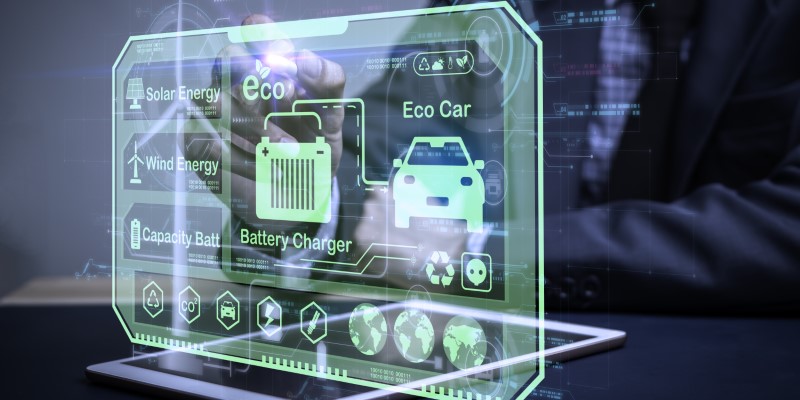Why Hyper-Personalization Is Reshaping Auto Insurance Policies
The auto insurance industry is undergoing a significant transformation driven by the rise of hyper-personalization. As technology advances, insurance companies are moving away from traditional, one-size-fits-all policies toward more tailored solutions that reflect individual driving habits, preferences, and behaviours.
In 2024, hyper-personalization will be a trend and necessary for insurers looking to meet customers' evolving demands. This article delves into the concept of hyper-personalization in auto insurance, the technologies enabling it, the benefits for policyholders, and the challenges it presents for the industry.
Understanding Hyper-Personalization In Auto Insurance
Hyper-personalization in auto insurance refers to the practice of creating highly customized insurance policies based on an individual's unique driving habits, lifestyle, and personal data; unlike traditional insurance models, which group customers into broad categories, hyper-personalization leverages detailed data to assess risk on a more granular level, resulting in policies that are more accurate and tailored to each driver.

The Shift From Traditional Models
Auto insurance traditionally used broad factors like age and location for premiums, often leading to inaccuracies. Using real-time data from telematics and connected vehicles, hyper-personalization offers a more precise assessment of a driver's risk. This approach allows insurers to provide policies that better reflect individual risk profiles.
Customer-Centric Insurance Solutions
In a world where consumers expect personalized experiences in all aspects of their lives, auto insurance is no exception. Hyper-personalization meets this expectation by creating a customer-centric approach to insurance.
Drivers receive coverage that aligns more closely with their actual needs and behaviours, whether adjusting premiums based on driving habits, offering rewards for safe driving, or providing coverage options tailored to specific vehicles and usage patterns.
Key Technologies Driving Hyper-Personalization
The advancement of hyper-personalization in auto insurance is mainly due to the integration of various technologies that enable insurers to collect, analyze, and apply data more effectively. These technologies make hyper-personalization possible and ensure it can be done efficiently and at scale.

Telematics And Connected Vehicles
Telematics technology plays a central role in hyper-personalized auto insurance. By installing telematics devices in vehicles or smartphone apps, insurers can monitor real-time data on driving behaviours such as speed, braking patterns, and mileage.
This data is then used to assess risk more accurately and adjust premiums accordingly. Connected vehicles, equipped with sensors and internet connectivity, provide an even richer data stream, allowing insurers to track vehicle health, location, and usage patterns, further refining policy personalization.
Artificial Intelligence And Machine Learning
Artificial intelligence (AI) and machine learning (ML) are crucial for processing the vast amounts of data generated by telematics and connected vehicles. These technologies analyze patterns and predict risk with greater accuracy than traditional methods. AI-driven algorithms can identify trends in driving behaviour, predict potential accidents, and suggest policy adjustments in real time, ensuring that each policyholder receives the most relevant and beneficial coverage.
Big Data Analytics
Big data analytics is another critical component in the hyper-personalization of auto insurance. Insurers can now aggregate and analyze data from multiple sources, such as social media, online activity, and customer interactions—to build comprehensive profiles of their policyholders. This holistic view enables insurers to tailor policies even further, considering factors like lifestyle choices, purchasing habits, and personal preferences, which can all influence driving behaviour and insurance needs.

Benefits Of Hyper-Personalization For Policyholders
The shift towards hyper-personalization in auto insurance brings numerous benefits for policyholders, offering more than just financial savings. It fundamentally changes the relationship between insurers and their customers, making insurance more accessible, relevant, and fair.
Tailored Premiums Based On Actual Risk
One of the most significant advantages of hyper-personalization is the ability to offer premiums that accurately reflect a driver's risk profile. Instead of relying on generic demographic data, insurers can use real-time driving data to adjust premiums dynamically. Safe drivers benefit from lower premiums, while those who engage in risky behaviours may see higher rates, encouraging safer driving habits across the board.
Enhanced Customer Satisfaction
Hyper-personalization also increases customer satisfaction by providing policies that better meet individual needs. For example, low-mileage drivers or those who use their cars infrequently can opt for pay-per-mile insurance, which aligns costs with actual usage. Additionally, insurers can offer customized rewards and incentives, such as discounts for eco-friendly driving or bonuses for maintaining a clean driving record, making the insurance experience more engaging and rewarding.

Challenges And Future Outlook Of Hyper-Personalization In Auto Insurance
While hyper-personalization offers numerous benefits, it also presents challenges that the auto insurance industry must address to realize its full potential. From data privacy concerns to the need for new regulatory frameworks, these challenges will shape the future of hyper-personalization in insurance.
Data Privacy And Security Concerns
The extensive use of personal data in hyper-personalization raises significant privacy and security concerns. Policyholders may be uncomfortable with continuously monitoring and analyzing their driving habits and personal information. Insurers must implement robust data protection measures to safeguard this sensitive information and ensure customer privacy is respected. Transparency in collecting, storing, and using data will be critical in gaining and maintaining customer trust.
Regulatory And Ethical Considerations
As hyper-personalization becomes more prevalent, regulators must adapt to ensure that the practice is fair and ethical. This includes addressing potential biases in AI algorithms that could lead to discriminatory pricing or coverage decisions. Regulatory bodies may need to establish new guidelines that balance innovation with consumer protection, ensuring that hyper-personalization does not disadvantage certain groups of drivers or create inequalities in the market.
The Future Of Hyper-Personalized Auto Insurance
The future of hyper-personalized auto insurance will involve real-time policy adjustments based on driving behaviour, advanced vehicle technology, and lifestyle changes. With the rise of autonomous vehicles, insurers will shift focus to covering connected ecosystems, leveraging emerging technologies like blockchain for enhanced transparency, trust, and data management.

Conclusion
Hyper-personalization is reshaping the auto insurance industry, offering more tailored and accurate policies that better reflect individual risk profiles. By using advanced technologies like telematics, AI, and big data analytics, insurers can provide more relevant and engaging customer insurance experiences.
However, this shift also challenges data privacy, regulatory compliance, and ethical considerations. As the industry navigates these challenges, hyper-personalization is poised to become a cornerstone of auto insurance, driving innovation and delivering significant benefits to policyholders in the years to come.





